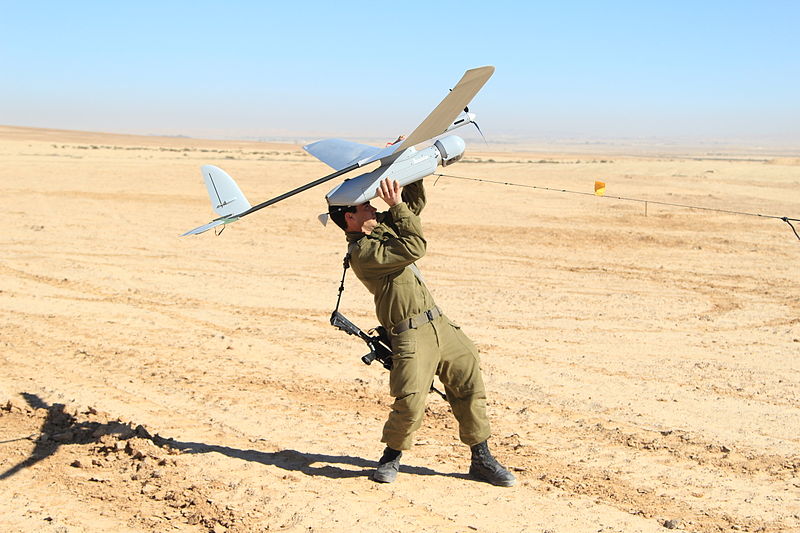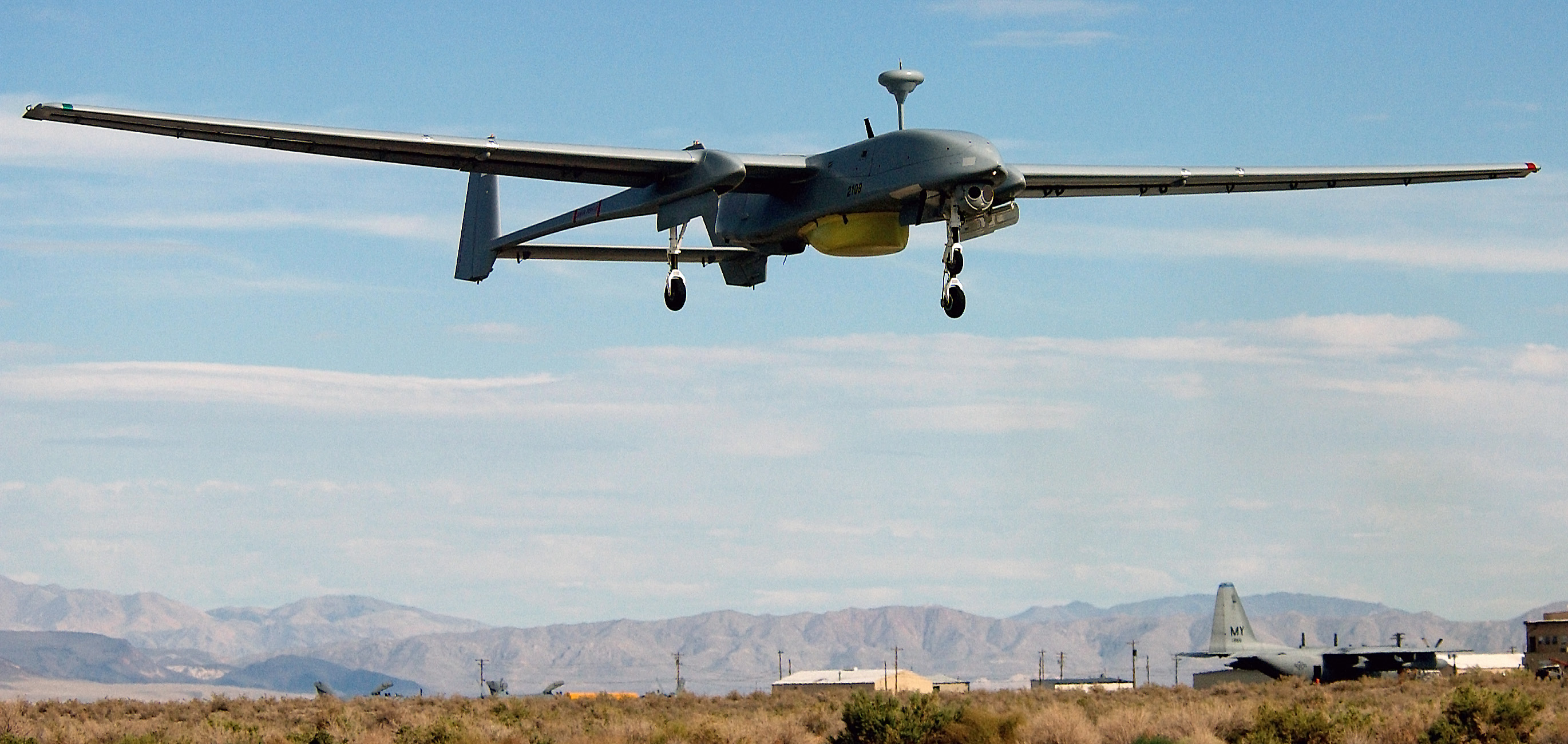Strategic Implications
In the foreseeable future, Israel will continue to use drone technology for a wide range of operational applications. As a result of constant development, drones are getting cheaper, more versatile – varying in size according to mission needs – and more capable of operating at longer ranges. The high costs involved with manned platforms and the low tolerance for casualties in Israeli society are driving drone development toward substitution for manned aerial operations, wherever those can be replaced. The relative dispensability of drones creates new tactical possibilities for the IDF, such as real-time collection of visual intelligence by ground units, rapid and targeted strike capabilities, and low-signature border-crossing intelligence collection.
Drone technology may also create new possibilities for Israel on the political front. For example, one significant hurdle in Israeli-Palestinian negotiations is the security arrangements that would result from any future agreement. A central item in any future security regime would be control of the Jordan Valley, which Israel sees as vital to its long-term security and in which Palestinians refuse to relinquish territorial sovereignty. With the advent of drone technology in recent years, policymakers have suggested that new solutions to this problem may be at hand that would allow Israel continued (unmanned) aerial presence over the Jordan Valley while allowing Palestinians sovereignty over the territory itself. Such ideas still face significant impediments to implementation (such as the inability of drones to overcome severe weather conditions, subterranean dimensions, etc.), but they still provide interesting conceptual directions for the future.
Drone technology also enables Israel to implement higher-risk aerial missions than it would have with human-inhabited aircraft. This is due to Israel’s very low tolerance for military casualties, the elimination of the risk of losing soldiers captured during peacetime operations, and the generally more lax response to drone penetration of enemy airspace compared with human-inhabited platforms. Sending a drone to perform a sortie over Bashar al-Assad’s palace in Damascus, for example, would create a very different psychological impact than an F-16 flown by an Israeli pilot. Likewise, the financial cost of losing a drone in a risky mission would be far less than that of losing an F-16 or a helicopter.
While Israel enjoyed complete aerial superiority in the field of drone warfare in recent decades, its lead is being increasingly challenged. Iran, Israel’s chief adversary, has been diligently developing drone technology in recent years and even captured an advanced American stealth UAV in 2011.6 In 2012 Israel shot down an unidentified drone that penetrated its airspace from the sea, traveling some 35 miles across the Negev desert before being shot down near Hebron.7 Iran has also been supplying Hezbollah and Hamas with drone technology, which both organizations have been using with increasing frequency to penetrate, test, and provoke Israel.
While Israel holds a robust array of aerial defenses and aerial interceptor batteries capable of stopping drones as well as various rocket barrages, enemy drones create new types of challenges that threaten Israel and will require its military to continuously adapt in the years to come. For example, in 2013 the Palestinian Authority Security Forces caught a Hamas cell that planned to send a UAV packed with explosives into Israel.8 The following year, Israel shot down a Hamas drone flying toward the southern city of Ashdod in the midst of Operation Protective Edge.9 Further, in 2015 Hezbollah claimed responsibility for sending a drone that penetrated Israel’s northern airspace.10 Such peacetime provocations are likely to continue, with the intention of both performing actual ISR and strike operations and harming Israelis’ sense of security. In turn, this will lead Israel to push forward development of its detection and interception capabilities to thwart such attempts. In the event of a larger-scale clash with Hezbollah, Hamas, or Iran, drone attacks against Israel are to be expected, but as large volleys of rockets and missiles would already be expected in such a scenario, the addition of drone strike attempts would not significantly alter Israel’s preparations for a wider conflict.

Drone uses against Israel in recent years have elicited less aggressive responses than human-inhabited vessels. In 2014 a Syrian manned Sukhoi-24 penetrated into Israeli airspace and quickly began turning around, before being shot down by an Israeli surface-to-air missile.11 The incident received wide media exposure and was followed by attempts to de-escalate and reduce tensions. In contrast, drone penetrations into Israel received less media attention and less-aggressive responses. This stems both from the psychological and legal distinction of having an enemy combatant within Israeli territory and from differences in kinetic threat potential between full-sized jets and smaller, slower enemy drones. As drone technology advances and norms develop regarding tolerance for cross-border drone penetration, the expected responses by Israel and its adversaries to border crossing operations will most likely continue to change and be shaped by future actions.
Norms regarding the downing of drones have not been completely set and are subject to context, change, and influence. Israel is not likely to react dramatically if one of its drones is downed over enemy territory, regardless of its mission or the equipment it is carrying. If a border-patrolling drone were shot down over Israeli territory, that might elicit a more aggressive response, such as the targeting of the source of fire or facilities of the entity responsible for the action. However, it is hard to fully predict such future scenarios, as they will depend highly on contextual circumstances.


 While Israeli companies often compete among themselves over tenders, the relatively small size of Israel’s defense community allows for occasional cooperative endeavors, especially when facing strong international competition.4 According to Elad Aharonson, director of Elbit’s UAV division, Israel’s drone industry is mindful to international competition, but not particularly troubled by top-end developments made in the United States. Classified technologies such as Northrop Grumman’s X-47B are not intended for export, and therefore not expected to disturb markets. In addition, he notes that Israel’s industries are focused on niche products, rather than large-scale platforms, as those would require massive industrial capacity and investment.5
While Israeli companies often compete among themselves over tenders, the relatively small size of Israel’s defense community allows for occasional cooperative endeavors, especially when facing strong international competition.4 According to Elad Aharonson, director of Elbit’s UAV division, Israel’s drone industry is mindful to international competition, but not particularly troubled by top-end developments made in the United States. Classified technologies such as Northrop Grumman’s X-47B are not intended for export, and therefore not expected to disturb markets. In addition, he notes that Israel’s industries are focused on niche products, rather than large-scale platforms, as those would require massive industrial capacity and investment.5
 Since Israel’s early years, its leaders have recognized the need for the country to maintain aerial superiority in the region to ensure an overwhelming qualitative military edge over its adversaries. This imperative translated into heavy investments in Israel’s air force, leading to the stunning military successes of 1967 and 1982. In recent decades, the same strategic effort has been diverted to the development of UAVs, which Israeli planners recognized fairly early were the new frontier of aerial warfare. These circumstances, alongside Israel’s advanced high-tech industrial capacity, have positioned the country among the world’s leading producers of drone technology, as well as an unmatched modern aerial power in its extended region. This status is likely to continue as domestic factors have created amenable conditions for Israel’s industry to advance with minimal constraints, positioning it well for the 21st century.
Since Israel’s early years, its leaders have recognized the need for the country to maintain aerial superiority in the region to ensure an overwhelming qualitative military edge over its adversaries. This imperative translated into heavy investments in Israel’s air force, leading to the stunning military successes of 1967 and 1982. In recent decades, the same strategic effort has been diverted to the development of UAVs, which Israeli planners recognized fairly early were the new frontier of aerial warfare. These circumstances, alongside Israel’s advanced high-tech industrial capacity, have positioned the country among the world’s leading producers of drone technology, as well as an unmatched modern aerial power in its extended region. This status is likely to continue as domestic factors have created amenable conditions for Israel’s industry to advance with minimal constraints, positioning it well for the 21st century.